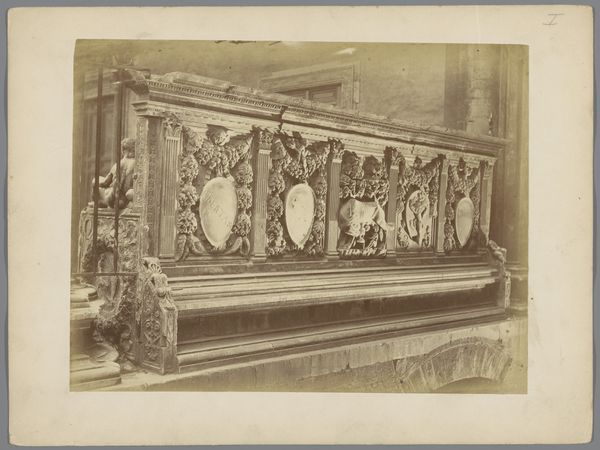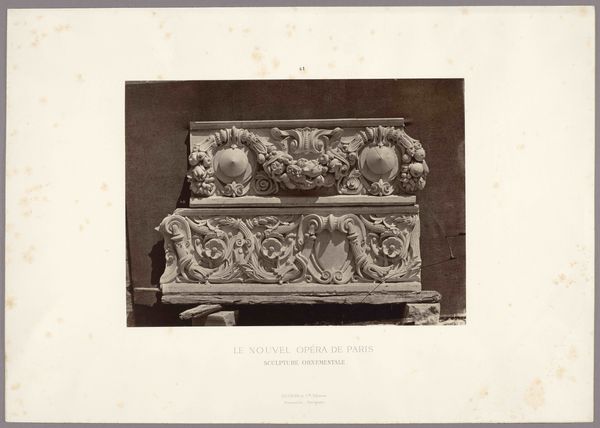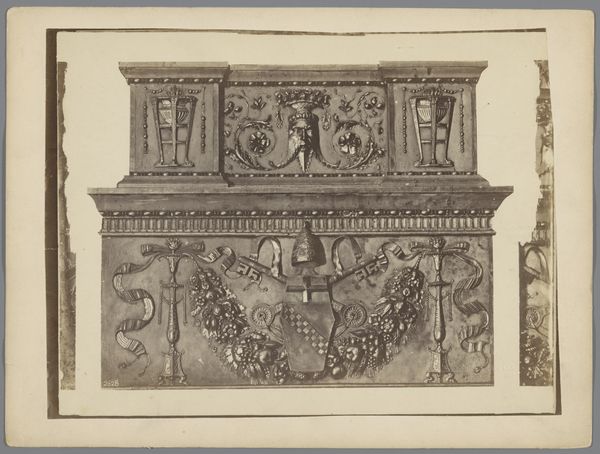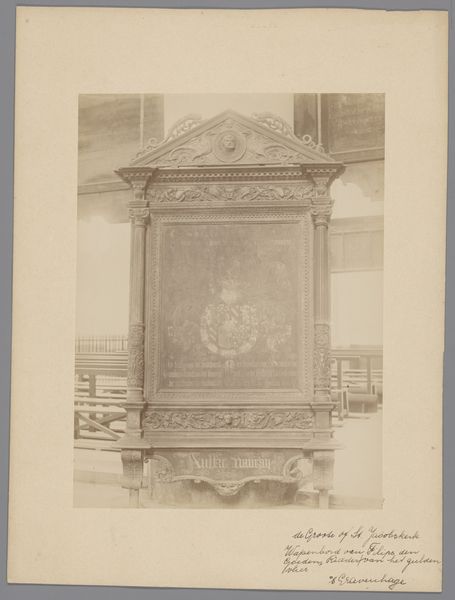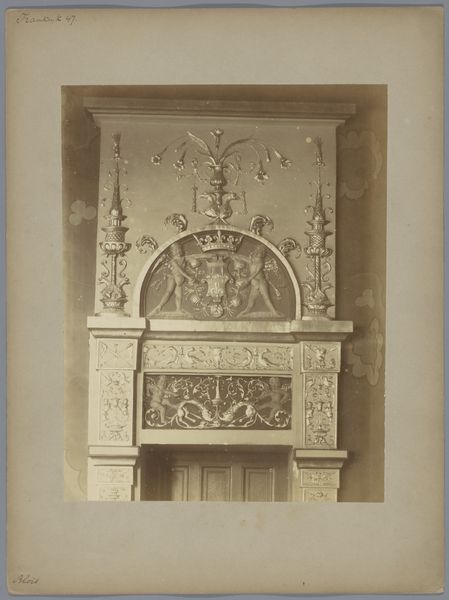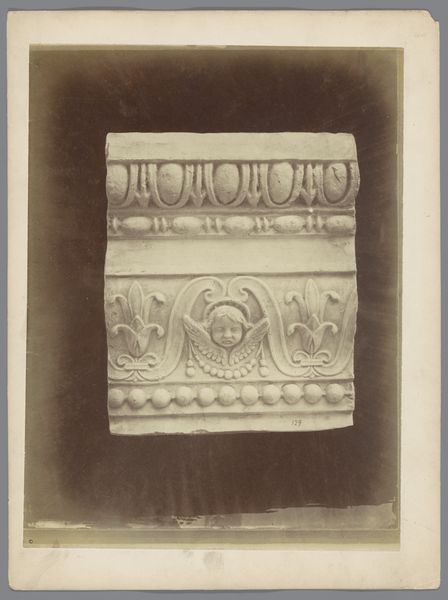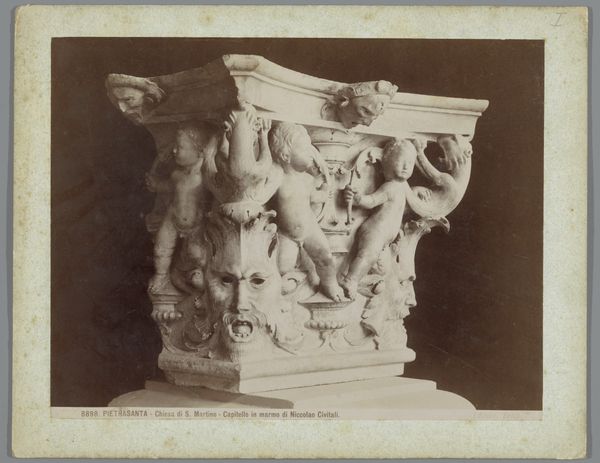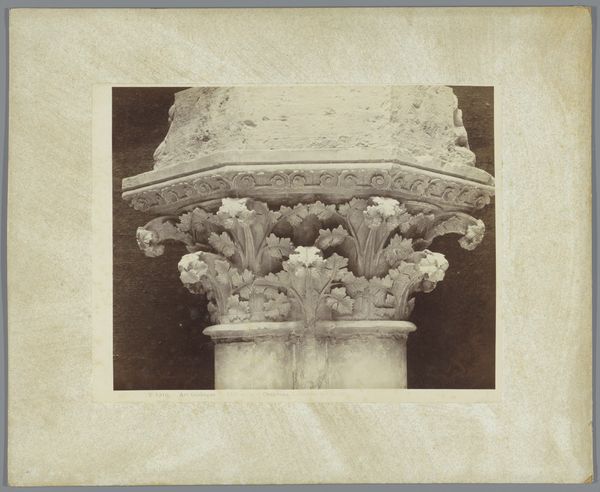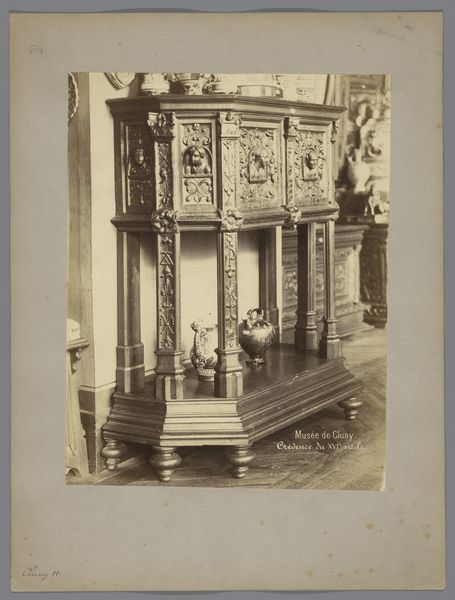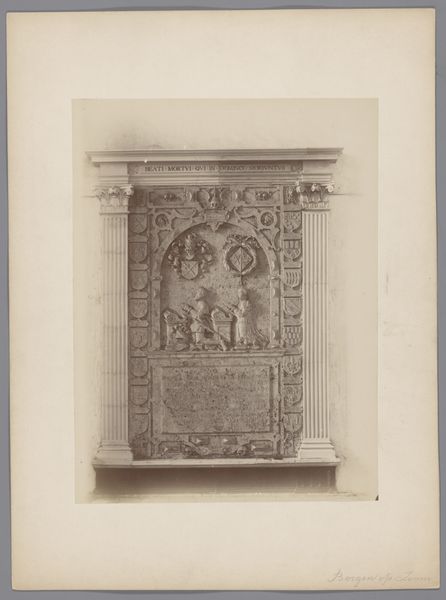
Kist met deksel en bovenop een wolvin die Remus en Romulus zoogt c. 1875 - 1900
0:00
0:00
bronze, photography, sculpture
#
bronze
#
photography
#
classicism
#
sculpture
Dimensions: height 208 mm, width 260 mm
Copyright: Rijks Museum: Open Domain
Curator: My goodness, it looks like some sort of antique strongbox, the kind a Roman emperor might keep his jewels in. Editor: This is indeed a fascinating object. We’re looking at a photograph of a bronze sculpture called "Kist met deksel en bovenop een wolvin die Remus en Romulus zoogt,” or "Box with lid and on top a wolf suckling Remus and Romulus." It dates back to around 1875-1900 and is attributed to Paolo Lombardi. Curator: The casting is beautiful! Do you see the vertical fluting? It really gives the piece some pomp, but then there is also all of the ornate detail in the decorative friezes with what appears to be griffins flanking the lid. Then that wolf on top. She looks more tired than ferocious. It’s magnificent. Editor: Absolutely! The classical references speak volumes. The choice of bronze as a material connects it to a tradition of ancient sculpture but think of what this would’ve meant in the 19th century. The adoption of these subjects and techniques also evokes a specific social aspiration—wealth, heritage, status… Even empire. How do we read the artist’s intentions, then, against the legacy of Italian expansionism? Curator: Ah, now that's a darker layer to peel back. Knowing that Rome's foundation myth is plastered across a Victorian strongbox adds a certain... irony. Are we celebrating power, or simply admiring superb craft? I confess, I get drawn into the raw texture and process itself—traces of the hand molding the clay into wax. To see the light glinting off those bronze ridges is pure joy! It speaks of patience, the sculptor’s dedication to form, to breathing life into this grand container. Editor: Yes, that tactile quality and tension between function and symbolism—this really invites questions. Consider where it would be displayed, how its surfaces were maintained by household staff, the act of polishing as preserving lineage, both literally and metaphorically… Curator: So, not just a strongbox, but a conversation starter! A memento, a piece of carefully-cultivated identity. Editor: Indeed. It seems that Lombardi invites us to rethink value. What do we preserve and what do we pass down, literally and figuratively?
Comments
No comments
Be the first to comment and join the conversation on the ultimate creative platform.

